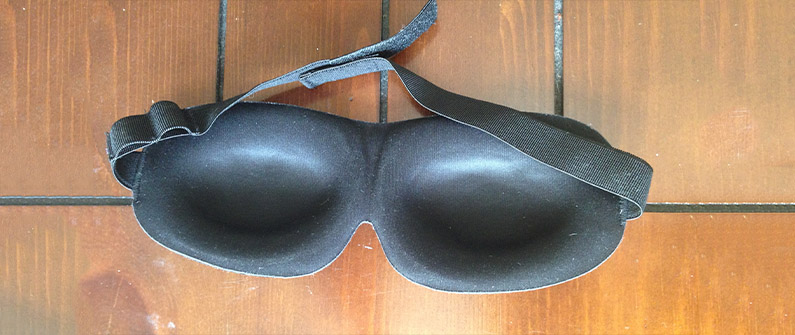
Prolonged exposure to light while we sleep can break up our body’s natural sleep cycles, contributing to numerous health problems, including obesity, inflammatory disease, and even depression. We were built to use natural light to regulate our circadian rhythm (aka our biological clock), and this 24-hour cycle helps us fall asleep when it gets dark and wake up when it’s light. But this internal, biological clock can easily adjust itself to other sources of light besides the sun.
With the amount of light most of us have in and around our bedrooms, it is easy to see how our circadian rhythms can become disrupted — which harms our rest.
While artificial lighting at night (LAN) is weaker than sunlight, it’s still a lot stronger than moonlight, and it undermines melatonin production, a chemical our brains produce at night (when it’s dark), to help regulate the sleep-wake cycle.
The Solution
Research suggests the best way to mitigate our exposure to LAN is to make our bedrooms as dark as possible and avoid exposure to blue light before bed — the kind of light given off by electronics like our TVs, ever-present smartphones, tablets, and laptops.
In the past few months, I painted my bedroom walls a satisfyingly dark off-black color, and have added covered my windows with the Eclipse Blackout Shades, making it my own veritable batcave. I haven’t had a TV in my bedroom since my last move 7 years ago, and I do not plan on getting one anytime in the near future. I have not, however, been able to avoid exposure to my phones (one personal, one for work — a ball and chain in 2015) at night! This is something I am working toward, and I will do an update if/when I accomplish this monumental (for me) goal.
My Tips
 Even though I’ve done what I think is a pretty good job blacking out my bedroom, there is still some light that comes through. I sleep with the bedroom door open, and there is plenty of light coming through indirectly thru my living room windows, along with some undeniably sneaky sunlight coming through my bedroom windows.
Even though I’ve done what I think is a pretty good job blacking out my bedroom, there is still some light that comes through. I sleep with the bedroom door open, and there is plenty of light coming through indirectly thru my living room windows, along with some undeniably sneaky sunlight coming through my bedroom windows.
Enter a new solution: eye masks!
I recently purchased the SleePedia Sleep Mask, which the manufacturer claims is able to completely block out light. The company markets its masks to travelers wanting to sleep on daytime flights, along with night shift workers who may need to sleep during the day.
Stated Use
A well-constructed mask that is lightweight, soft, and comfortable and is designed to put no pressure in the eyes. It boasts total darkness.
My Experience
I was really excited to try this mask, especially since the summer sun has been waking me up at 5:30 AM the past few weeks. The mask is molded, but still super soft, and it was significantly wider than any other masks I’ve tried. When it came time to go to bed, I adjusted the size of the straps by moving the velcro fastener, but I wondered what people with smaller heads may have to do to make the mask fit.
Although wide and tall, the mask fits comfortably, and I had no problems falling asleep. In the morning, no light came through on the sides of the mask, but my nose seems to push the mask just far enough away from my face to allow light to come in from the bottom. I don’t have a huge nose, but I suspect the shape of it may once again be the culprit for why the mask failed to achieve its claim of blocking out all light.
Pros
- It fits well, especially for people with large or wide heads
- It blocks out any lights from coming in from the sides
- I could comfortably blink with the mask on
Cons
- Light still comes in from the bottom of the mask
- People with small or narrow heads may have trouble getting the mask to fit snugly
The Final Word
I’ve switched to the SleePedia mask through the summer, because although light still comes in, it’s a lot less than with the Binchotan Mask I also own. I suspect I will be switching back to the Binchotan as soon as the sun starts coming up after my alarm, because I miss how rested the mask makes me look. Who knows? I may even try layering the two of them one of these nights. If I do, I’ll be sure to report back.
